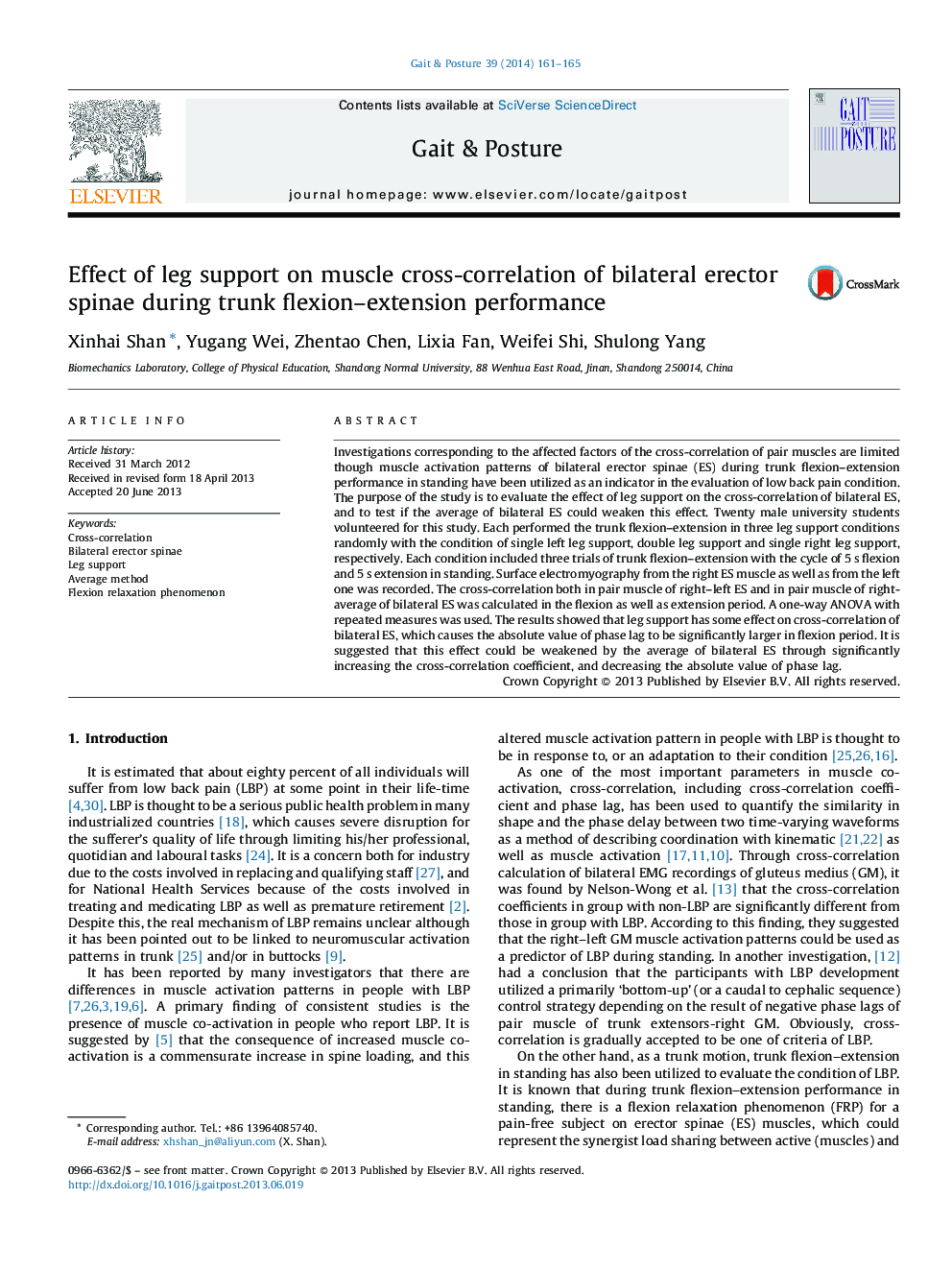| کد مقاله | کد نشریه | سال انتشار | مقاله انگلیسی | نسخه تمام متن |
|---|---|---|---|---|
| 6206941 | 1265653 | 2014 | 5 صفحه PDF | دانلود رایگان |

- Leg support has some effect on cross-correlation of bilateral ES.
- Single leg support causes the absolute value of phase lag to be significantly larger in flexion period.
- The average of bilateral ES could increase the cross-correlation coefficient, and decrease the absolute value of phase lag.
Investigations corresponding to the affected factors of the cross-correlation of pair muscles are limited though muscle activation patterns of bilateral erector spinae (ES) during trunk flexion-extension performance in standing have been utilized as an indicator in the evaluation of low back pain condition. The purpose of the study is to evaluate the effect of leg support on the cross-correlation of bilateral ES, and to test if the average of bilateral ES could weaken this effect. Twenty male university students volunteered for this study. Each performed the trunk flexion-extension in three leg support conditions randomly with the condition of single left leg support, double leg support and single right leg support, respectively. Each condition included three trials of trunk flexion-extension with the cycle of 5Â s flexion and 5Â s extension in standing. Surface electromyography from the right ES muscle as well as from the left one was recorded. The cross-correlation both in pair muscle of right-left ES and in pair muscle of right-average of bilateral ES was calculated in the flexion as well as extension period. A one-way ANOVA with repeated measures was used. The results showed that leg support has some effect on cross-correlation of bilateral ES, which causes the absolute value of phase lag to be significantly larger in flexion period. It is suggested that this effect could be weakened by the average of bilateral ES through significantly increasing the cross-correlation coefficient, and decreasing the absolute value of phase lag.
Journal: Gait & Posture - Volume 39, Issue 1, January 2014, Pages 161-165